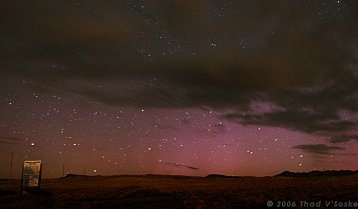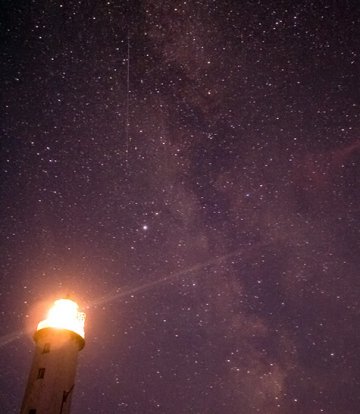 Would you like a call the next time a geomagnetic storm erupts? Sign up for Spaceweather PHONE.
Would you like a call the next time a geomagnetic storm erupts? Sign up for Spaceweather PHONE.
DAWN PLANETS: Up before dawn? Step outside and look east. You'll see Venus and Mercury beaming through the rosy glow of sunrise. The two bright morning planets are converging for a close encounter on August 10th and 11th: sky map.
AURORA SURPRISE: A solar wind stream hit Earth this morning, sparking a geomagnetic storm. The arrival of the stream was unexpected, but the auroras it produced were a pleasant surprise.
"At 3:59 am, I pointed my camera north. Even though my eyes couldn't see the auroras, the camera captured them in this 75-sec exposure," says photographer Thad V'Soske in Grand Valley, Colorado:

Auroras over Colorado. August 7, 2006. Credit: Thad V'Soske.
North of Colorado, the auroras were bright enough to see with the unaided eye, but V'Soske's photographic auroras were most interesting. They show that, sometimes, auroras are "up there" even when you can't see them. All it takes is a well-timed click of the camera to make a very pretty picture.
August 2006 Aurora Gallery
METEOR WATCH: Look now for Perseid meteors. The annual shower's peak on August 12th will be spoiled by a nearly-full Moon. So don't wait. Set your alarm for 3 am and go outside for a couple of hours before sunrise on August 8th and 9th. In the moonless morning sky, you might see a nice meteor every ten minutes or so.

Above: A Perseid meteor streaks over the island of Öland, Sweden, on August 5th. "I captured this meteor and the Milky Way beside the lighthouse 'Långe Erik'," says photographer P-M Hedén.

